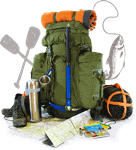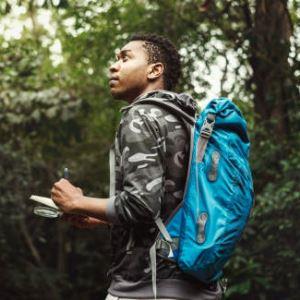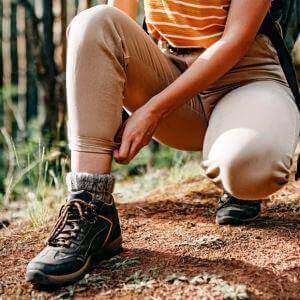 Embarking on a week-long safari to climb Mount Kenya, Africa's second-highest peak presents adventurers with an unparalleled blend of natural beauty, challenging terrains, and a unique opportunity to immerse themselves in the rich cultural heritage of Kenya. Standing tall at 5,199 meters, Mount Kenya is not only a natural marvel but also a symbol of endurance, offering climbers a variety of routes that cater to both seasoned mountaineers and enthusiastic beginners. This safari expedition is more than a mere ascent; it's a voyage through diverse ecological zones, from lush montane forests inhabited by exotic wildlife to the alpine zone's stark beauty, where giant lobelias and groundsel plants thrive. As climbers ascend, they are rewarded with breathtaking vistas of glacial valleys and ancient volcanic formations, encapsulating the mountain's geological history. The trek towards Point Lenana, the most accessible of the three peaks, is a highlight, offering awe-inspiring sunrises that illuminate the African plains below. However, the safari is not solely about reaching the summit; it is also about experiencing the warmth of the local communities, whose stories and traditions add a rich layer of depth to the adventure. These communities, living in harmony with the mountain's rhythm, offer insights into sustainable practices and the importance of conserving this majestic natural resource. Exploring Mt Kenya for 1 week safari allows adventurers to fully engage with the mountain's spirit, challenge their limits, and discover the intricate balance between nature and humanity. This experience promises not just a physical accomplishment but a profound personal transformation, making it a must-do for those seeking to explore the heart of Africa's wild beauty.
Embarking on a week-long safari to climb Mount Kenya, Africa's second-highest peak presents adventurers with an unparalleled blend of natural beauty, challenging terrains, and a unique opportunity to immerse themselves in the rich cultural heritage of Kenya. Standing tall at 5,199 meters, Mount Kenya is not only a natural marvel but also a symbol of endurance, offering climbers a variety of routes that cater to both seasoned mountaineers and enthusiastic beginners. This safari expedition is more than a mere ascent; it's a voyage through diverse ecological zones, from lush montane forests inhabited by exotic wildlife to the alpine zone's stark beauty, where giant lobelias and groundsel plants thrive. As climbers ascend, they are rewarded with breathtaking vistas of glacial valleys and ancient volcanic formations, encapsulating the mountain's geological history. The trek towards Point Lenana, the most accessible of the three peaks, is a highlight, offering awe-inspiring sunrises that illuminate the African plains below. However, the safari is not solely about reaching the summit; it is also about experiencing the warmth of the local communities, whose stories and traditions add a rich layer of depth to the adventure. These communities, living in harmony with the mountain's rhythm, offer insights into sustainable practices and the importance of conserving this majestic natural resource. Exploring Mt Kenya for 1 week safari allows adventurers to fully engage with the mountain's spirit, challenge their limits, and discover the intricate balance between nature and humanity. This experience promises not just a physical accomplishment but a profound personal transformation, making it a must-do for those seeking to explore the heart of Africa's wild beauty.
How to Prepare for a Climb during a Mt Kenya Safari Adventure
Physical Preparation
Climbing Mt. Kenya safari is no small feat. It requires a good level of physical fitness and mental preparedness. Start training months in advance, focusing on cardiovascular exercises, strength training, and hiking to build your endurance. Remember, you'll be trekking at high altitudes, so acclimatization is key.
Gear and Supplies
The right gear can make or break your climbing safari experience. Essential items include warm clothing, waterproof jackets, good-quality hiking boots, sleeping bags suitable for low temperatures, and a comfortable backpack. Also, don't forget to pack a first-aid kit, sun protection, and enough food and water supplies for the duration of the trek.
Choosing the Right Route
Mt. Kenya boasts several routes, each offering different levels of difficulty and scenic beauty. The most popular are the Naromoru, Chogoria, and Sirimon routes. For beginners, the Sirimon route is recommended for its gradual ascent and scenic variety. Those seeking a more challenging climb safari might opt for the Chogoria route, known for its steep terrains and spectacular landscapes.
Sample 7 Days Mount Kenya Exploration Itinerary – Best Adventure
Day 1-2: Acclimatization and Initial Ascent
The safari adventure often begins at the forest base, where climbers can enjoy the rich biodiversity of the montane forests. These first two days are crucial for acclimatization, with treks to higher camps like Old Moses Camp on the Sirimon route, offering splendid views and a gentle introduction to the mountain's challenges.
Day 3-4: Trekking Through the Moorlands
As you ascend, the landscape transitions to alpine moorlands, characterized by vast open lands, unique flora like the giant lobelia, and the occasional sighting of wildlife such as buffaloes and elephants. This phase is both physically demanding and visually rewarding, with clear nights offering unparalleled stargazing opportunities.
Day 5-6: Approaching the Summit
The trek becomes more arduous as you approach the summit zones. The terrain gets rockier, and the oxygen levels drop, making every step a testament to your determination. This is when climbers encounter the iconic Point Lenana, the trek's highest accessible peak for most. Witnessing the sunrise from this point is an experience of a lifetime, illuminating the African plains below and the distant horizon.
Day 7: Descent and Reflection
The descent is a time for reflection, taking in the enormity of the accomplishment. It's also a time to appreciate the mountain's ever-changing scenery one last time. The journey back to the base is a mix of relief, joy, and a deep connection with nature that only such an expedition can offer.
Mt. Kenya is not only a UNESCO World Heritage site but also a Biosphere Reserve. Climbers are urged to practice Leave No Trace principles, ensuring that future generations can also experience the awe-inspiring beauty of this mountain. This includes packing out all trash, minimizing campfire impacts, and respecting wildlife and local communities.
Exploring Mt Kenya for 1 week safari is an adventure that offers more than just the physical challenge of reaching Africa's second-highest peak. It's a journey through diverse ecosystems, an opportunity to witness the raw beauty of nature and a personal quest that tests one's limits. Whether you're an avid mountaineer or a nature lover seeking your next big adventure, Mt. Kenya promises an experience filled with awe, beauty, and a sense of profound accomplishment.
Best Time to Climb Mt Kenya – Get Ready for the Safari Adventure
For those drawn to the serene beauty of mountain landscapes and the thrill of hiking, determining the optimal season to climb Mt. Kenya is essential for a rewarding and safe safari experience. Rising gracefully above the equatorial African plains, Mt. Kenya is not only a natural marvel but also a symbol of safari adventure that attracts trekkers from around the globe. This extinct volcano, cloaked in glaciers and alpine forests, presents varying climatic conditions that significantly influence the climbing safari experience. The best time to undertake this remarkable ascent is a decision that hinges on understanding the mountain's weather patterns, trail conditions, and the unique challenges posed by its altitude. With its peaks reaching the heavens, the journey to Mt. Kenya's safari is both a physical and a spiritual quest, offering unparalleled views and the satisfaction of conquering one of the world's most revered mountains. However, the mountain's unpredictable weather can turn an expedition into a challenging ordeal, and choosing when to climb is more than just a matter of preference. Below is guidance for aspiring climbers through the complexities of Mt. Kenya's seasonal variations, offering insights into the ideal periods for embarking on this once-in-a-lifetime safari adventure. Whether you're a seasoned mountaineer or a determined novice, understanding the optimal season for climbing Mount Kenya is the first step in ensuring your journey is not only memorable but also harmonious with the natural rhythms of this majestic landscape.
Best Months for Climbing Mt Kenya – Best Safari Expedition
Mount Kenya, the second-highest peak in Africa, presents a unique challenge and allure for mountaineers around the world. Its diverse routes and varying climate conditions make certain months more favorable for climbing than others. Drawing on expert advice, it highlights the best months to embark on this majestic safari adventure, ensuring climbers experience the beauty and challenge of Mt. Kenya under the best possible conditions. The best times to climb Mt. Kenya are during the dry seasons, which typically occur from mid-December to early March and from late June to early October. These periods offer the most stable weather conditions, with clear, sunny days and minimal rainfall, making them ideal for climbing.
December to March: A Favorable Window
The December to March window is particularly recommended by experts for several reasons. Firstly, the weather is predominantly sunny and dry, providing excellent conditions for trekking and climbing safari adventures. Visibility is also at its peak, offering climbers breathtaking views of the surrounding landscapes and wildlife. Moreover, this period avoids the long rains of April and May, ensuring paths are less slippery and the risk of encountering leeches is minimized.
June to October: Another Prime Season
Similarly, the June to October period is highly favored. This season follows the short rains of late March, April, and May, leaving the vegetation lush and the air crisp and clear. These months also coincide with the European and North American summer holidays, making it a popular time for climbers. However, it's slightly colder than the December to March period, requiring climbers to prepare for cooler temperatures, especially at higher altitudes. The best months for climbing Mt Kenya, offering clear skies and minimal precipitation, are typically January through March and July through October.
Therefore, the best time to climb Mt Kenya, as agreed upon by experts, falls primarily within the dry seasons of January to February and July to October. These months offer climbers the most favorable weather conditions, reduced rainfall, and clearer paths, enhancing both the safety and enjoyment of the safari expedition. Embracing the wisdom of those who have mastered these trails, adventurers are encouraged to plan their ascents during these periods. By aligning with the optimal climbing times, enthusiasts can fully experience the majestic beauty and challenging terrain of Mt Kenya, ensuring a memorable and rewarding journey to one of Africa's highest peaks.
Safety Considerations for Climbing During Peak and Off-Peak Seasons
Climbing, whether tackling a craggy rock face or ascending a towering peak, offers an exhilarating blend of physical challenge and mental fortitude. However, the risks associated with climbing fluctuate significantly between peak and off-peak seasons, making safety considerations paramount for climbers of all levels. Below are essential safety measures tailored to the seasonal variations in climbing environments. During peak climbing seasons, the most apparent challenge is the increased foot traffic on popular routes. Congestion not only slows progress but can also heighten the risk of accidents, such as falling rocks dislodged by climbers above. To mitigate these risks, climbers should start their ascents early in the morning to avoid crowds, maintain a safe distance from other parties, and wear helmets to protect against falling debris. Moreover, peak seasons often coincide with more stable weather conditions, offering climbers the advantage of predictability. Nonetheless, sudden weather changes in mountainous regions can catch climbers off guard. Hence, thorough weather checks before embarking on a climb and carrying appropriate gear for unexpected conditions are crucial. Conversely, off-peak seasons pose a different set of challenges, primarily due to less favorable weather conditions, including snow, ice, and reduced visibility. Climbers venturing out during these times must be proficient in using specialized equipment such as ice axes and crampons and have the skills to navigate potentially hazardous terrain. Additionally, the importance of understanding and recognizing the signs of hypothermia and frostbite cannot be overstated in these colder, more unpredictable climates. Regardless of the season, all climbers should adhere to the principles of Leave No Trace to minimize their environmental impact and preserve the natural beauty of climbing locales for future generations. Furthermore, comprehensive planning, including informing someone about your climbing plans and expected return time, is essential for safety in both peak and off-peak seasons. While the allure of climbing is undeniable, respecting the unique challenges presented by different seasons and preparing accordingly can significantly enhance the safety and enjoyment of your climbing adventures. Whether you're basking in the crowded warmth of peak season or embracing the solitary chill of the off-peak, awareness, preparation, and respect for the environment are your keys to a safe and rewarding experience.
The best time to climb Mt Kenya, Africa's second-highest peak, is during the dry seasons, which span from December to March and July to October. These periods offer the most favorable conditions for hiking, with clearer skies, minimal rainfall, and optimal temperatures. This timing allows climbers to fully appreciate the mountain's diverse ecosystems and stunning vistas without the hindrance of adverse weather. Planning your climb safari expedition within these windows not only ensures a safer ascent but also enhances the overall experience, making it a memorable safari adventure. Always remember to consider your physical readiness and to prepare accordingly for this magnificent journey.
Basic Requirements for Climbing Mt. Kenya – Prepare for Safari
 Mount Kenya, Africa's second-highest peak after Mount Kilimanjaro, offers an extraordinary safari adventure for climbers, hikers, and nature enthusiasts alike. Standing at an elevation of 5,199 meters (17,057 feet), its majestic presence is both inviting and challenging. Climbing Mount Kenya is not only a physical endeavor but also a journey that requires careful planning, preparation, and understanding of what lies ahead. Below we aim to provide potential climbers with a comprehensive overview of the basic requirements needed to undertake this remarkable safari adventure, ensuring a safe and enjoyable experience. The journey to the summit of Mount Kenya is a multifaceted one, involving various routes that cater to different skill levels, from the novice trekker to the experienced climber. However, irrespective of the chosen path, certain fundamental requirements remain constant. Firstly, a good level of physical fitness is paramount, as the trek involves navigating through diverse terrains, from dense rainforests to rocky paths and steep scree slopes. Additionally, acclimatization to high altitudes is critical to prevent altitude sickness, a common challenge faced by climbers. Equally important is the selection of appropriate gear and clothing. The weather on Mount Kenya can be unpredictable, with temperatures ranging from warm tropical climates at the base to below-freezing conditions near the summit. Therefore, climbers on the safari must be equipped with warm, waterproof clothing, suitable footwear, and necessary climbing gear. Moreover, a comprehensive understanding of the mountain's ecology, weather patterns, and potential hazards is essential for a safe safari expedition. Guidance and support from experienced guides and porters cannot be overstressed. These professionals not only offer invaluable knowledge of the mountain's trails and conditions but also provide logistical support, enhancing the overall climbing experience. Lastly, climbers must adhere to conservation principles, respecting the pristine environment and ensuring minimal impact on the mountain's delicate ecosystems. Climbing Mount Kenya is a rewarding safari experience that demands thorough preparation, respect for the natural environment, and a keen sense of adventure. By understanding and meeting these requirements for climbing Mt. Kenya, climbers can look forward to a memorable journey to one of Kenya's most iconic landmarks.
Mount Kenya, Africa's second-highest peak after Mount Kilimanjaro, offers an extraordinary safari adventure for climbers, hikers, and nature enthusiasts alike. Standing at an elevation of 5,199 meters (17,057 feet), its majestic presence is both inviting and challenging. Climbing Mount Kenya is not only a physical endeavor but also a journey that requires careful planning, preparation, and understanding of what lies ahead. Below we aim to provide potential climbers with a comprehensive overview of the basic requirements needed to undertake this remarkable safari adventure, ensuring a safe and enjoyable experience. The journey to the summit of Mount Kenya is a multifaceted one, involving various routes that cater to different skill levels, from the novice trekker to the experienced climber. However, irrespective of the chosen path, certain fundamental requirements remain constant. Firstly, a good level of physical fitness is paramount, as the trek involves navigating through diverse terrains, from dense rainforests to rocky paths and steep scree slopes. Additionally, acclimatization to high altitudes is critical to prevent altitude sickness, a common challenge faced by climbers. Equally important is the selection of appropriate gear and clothing. The weather on Mount Kenya can be unpredictable, with temperatures ranging from warm tropical climates at the base to below-freezing conditions near the summit. Therefore, climbers on the safari must be equipped with warm, waterproof clothing, suitable footwear, and necessary climbing gear. Moreover, a comprehensive understanding of the mountain's ecology, weather patterns, and potential hazards is essential for a safe safari expedition. Guidance and support from experienced guides and porters cannot be overstressed. These professionals not only offer invaluable knowledge of the mountain's trails and conditions but also provide logistical support, enhancing the overall climbing experience. Lastly, climbers must adhere to conservation principles, respecting the pristine environment and ensuring minimal impact on the mountain's delicate ecosystems. Climbing Mount Kenya is a rewarding safari experience that demands thorough preparation, respect for the natural environment, and a keen sense of adventure. By understanding and meeting these requirements for climbing Mt. Kenya, climbers can look forward to a memorable journey to one of Kenya's most iconic landmarks.
1. Physical Fitness and Preparation
The first and foremost requirement for hiking Mt Kenya is a good level of physical fitness. The trek involves long days of walking, often on steep and rough terrain, at high altitudes where oxygen levels are lower. Before you start your safari, engage in regular cardiovascular exercises such as running, swimming, or cycling. Additionally, incorporate strength training and hikes in your training regimen to acclimate your body to similar conditions.
2. Choosing the Right Route
Mt. Kenya has several routes, each offering different levels of difficulty, scenic views, and trekking experiences. The most popular routes are:
Sirimon Route: Known for its gradual ascent and better acclimatization profile. It is considered the easiest path to Point Lenana, the trekker’s peak.
Naro Moru Route: The fastest route to the summit but also the most challenging due to the steep ascent and the infamous 'Vertical Bog.'
Chogoria Route: Favored for its scenic beauty, it is longer and provides a gentler climb compared to the Naro Moru route.
Selecting the right route is crucial and should be based on your physical fitness, experience, and personal preference.
3. Acclimatization
Acclimatization is key to avoiding altitude sickness, which can be a major challenge when climbing high mountains. Spend a few days at moderate altitudes and take it slow as you ascend to higher elevations. Choosing a longer route or adding extra days to your trek can help your body adjust to the altitude gradually.
4. Professional Guides and Porters
Hiring a professional guide and porters is mandatory in Mt. Kenya National Park. Guides are essential for navigation, safety, and providing valuable insights about the mountain. Porters carry your luggage, allowing you to focus on the trek. Ensure your guide and porters are registered and experienced.
5. Gear and Equipment
Proper gear and equipment are vital for a safe and comfortable climb. Key items include:
✓ Warm clothing in layers for temperature fluctuations
✓ Waterproof jacket and pants
✓ Good quality hiking boots with ankle support
✓ Sleeping bag rated for low temperatures
✓ Headlamp, sunglasses, and sunscreen
✓ Trekking poles
✓ Water purification tablets or filters
6. Permits and Fees
You need to obtain a permit to climb Mt. Kenya, which can be arranged through a tour operator or directly at the park gates. The fees contribute to the conservation of the park and the communities around it. Ensure you have all necessary permits before starting your trek.
7. Travel Insurance
Having travel insurance that covers high-altitude trekking is crucial. Ensure your policy includes medical evacuation and hospitalization in case of emergencies.
8. Environmental Awareness
Mt. Kenya is a UNESCO World Heritage site and a Biosphere Reserve. Trekkers are encouraged to follow Leave No Trace principles to minimize their environmental impact. This includes packing out all trash, staying on designated trails, and respecting wildlife. Climbing Mt. Kenya is an unforgettable safari experience that requires thorough preparation and respect for the mountain's challenges. By ensuring you meet the basic requirements, from physical fitness to proper gear and environmental awareness, you'll be well on your way to a successful and enjoyable ascent. Remember, the journey to the summit is not just about reaching the top but also about embracing the beauty and lessons of the mountain. Conquering Mt. Kenya is a safari adventure that promises awe-inspiring landscapes and a true test of endurance. The journey to its peaks requires careful preparation, both physically and mentally. Prospective climbers must prioritize acclimatization to the high altitude, secure the necessary gear for varying terrains, and obtain a permit for access. It's also essential to choose an experienced guide who can navigate the mountain's challenges safely. By meeting these requirements for climbing Mt. Kenya, climbers can ensure they are well-equipped to embrace the beauty and challenges of Mt. Kenya, making their ascent not just a trek, but a memorable expedition into the heart of nature.






